by Scott Menough, owner of Wild Birds Unlimited in Denver
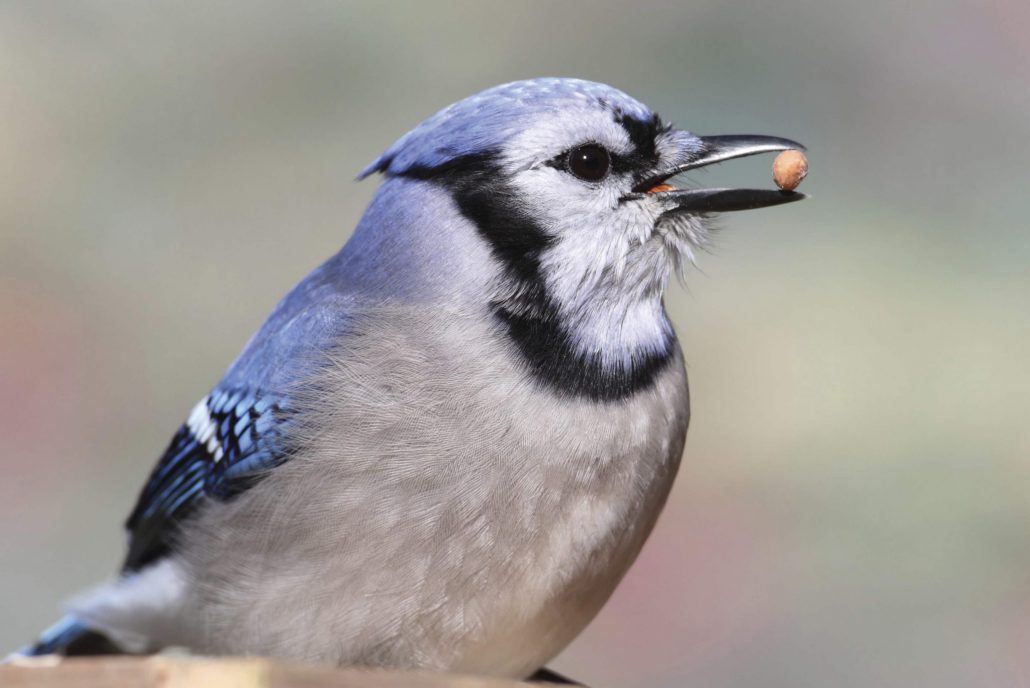
A Blue Jay enjoys a peanut.
Winter bird feeding is not only enjoyable but also rewarding—we get to help our winged friends and view nature up close. When it’s cold and snowy, feathers fluff to the point that birds appear to be round balls of down. The finches seem to be eating non-stop. That is, until a hawk stops by to try to catch a meal. The Red-shafted Flicker, a common woodpecker in Colorado, stops by for a snack. The Blue Jay attempts to grab the peanuts and sunflower seeds before that flicker can. In later winter, some of the birds that spend most of their time in the foothills and mountains venture closer to populated areas. Pine Siskins may arrive en masse to crowd on the thistle feeder joined by American Goldfinches. Downy Woodpeckers and nuthatches may be seen eating sunflower seeds or raiding the suet feeder. Juncos of different populations appear shuffling at the ground feeder to scratch the seeds out of the snow. The Black-Capped Chickadees, and maybe even a Mountain Chickadee or two, may appear and work their way busily around the trees until they can find room at a feeder to take one seed at a time.
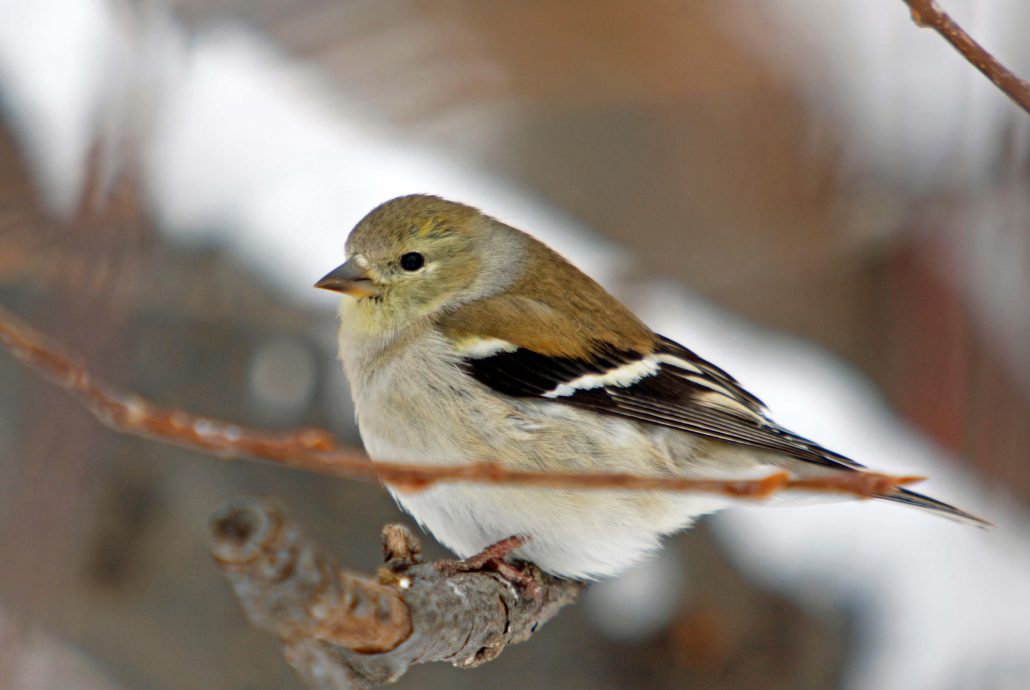
American Goldfinch. Photo: John Carr
Since their usual food sources are scarce, winter feeding helps birds. To attract your desired birds, pick your seeds carefully. Many of the seeds that we feed in the summer and fall are still excellent foods for winter feeding. Oil-type sunflower seed is still the most important seed to use at our feeding station. This seed is preferred by finches, chickadees, grosbeaks, and nuthatches. Millet is important for ground-feeding birds. These “ground-feeders” include the doves, sparrows, and Dark-eyed Juncos. These birds will feed from platform feeders also. Striped sunflower and peanuts in the shell are the preferred seeds of jays and woodpeckers. Nyjer® seed, nicknamed thistle, is preferred by goldfinches and Pine Siskins.
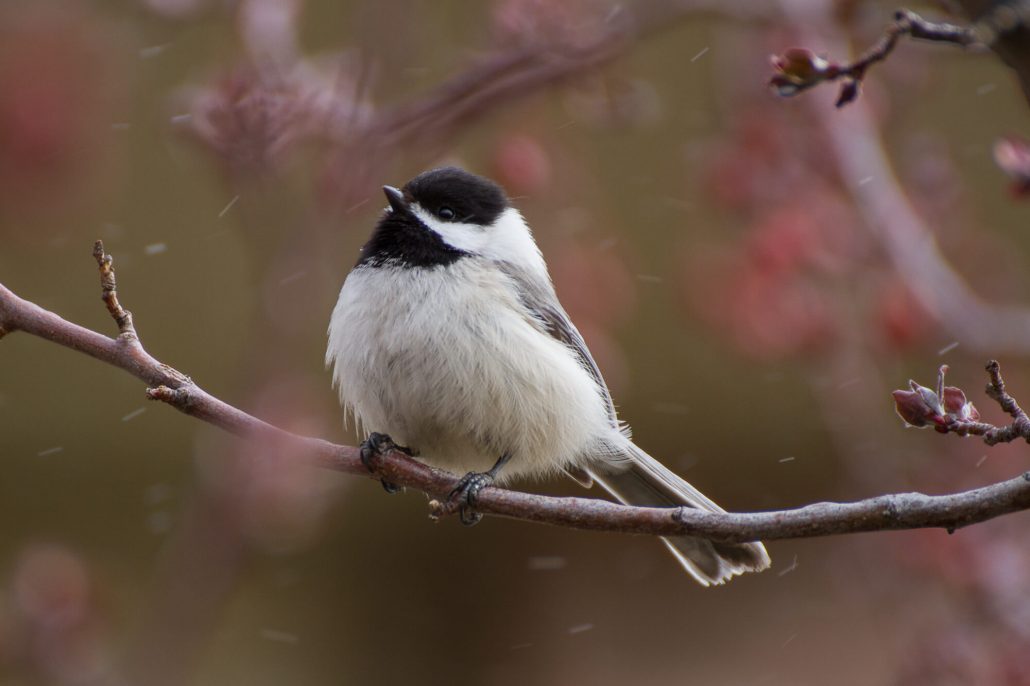
Black-capped Chickadee. Photo: Stephanie Montgomery
Using seed mixtures of sunflowers, safflower and millet are an excellent way to attract a good variety of birds with a small number of feeders. Avoid mixes containing ‘filler’ such as milo, wheat and oats since birds will generally knock those seeds to the ground. The high oil content of many seeds (less in millet than the others) helps provide the extra energy that birds need to keep warm. Suet can be an important winter food source for insect eaters such as flickers, Downy and Hairy Woodpeckers, chickadees, Bushtits and nuthatches. The easiest way to provide suet is to use commercially prepared cakes or tubs. These are less messy, resist spoilage, and don’t need to be refrigerated. Be patient with the feeding of suet and experiment. Sometimes a major change in the weather is needed to bring the birds to suet.
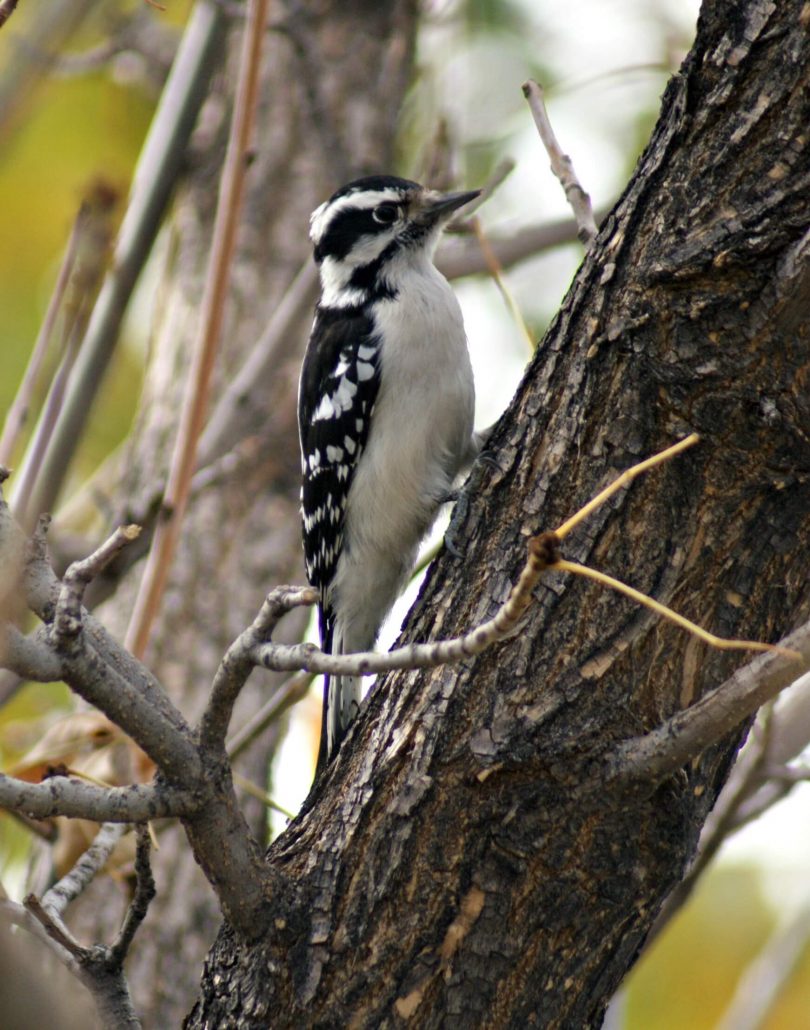
Downy Woodpecker. Photo: Kari Strand
Water is very important for birds in the winter. When the natural water sources are frozen birds resort to eating snow. This tends to lower their body temperature and can actually cause dehydration. Much energy is expended to convert the eaten snow to water. Providing water for birds can attract birds that won’t normally visit our feeders. Robins will drink and bathe at a bird bath in the winter. Clean feathers keep birds warmer than dirty feathers.
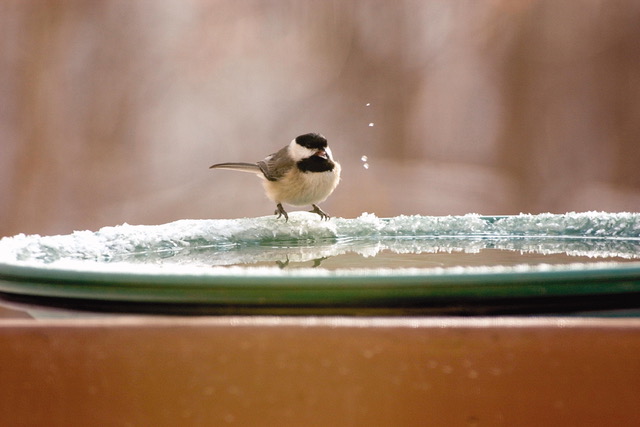
A chickadee takes advantage of a heated bird bath.
Keeping water unfrozen for the birds can be quite a chore unless you use a bird bath heater. The best heaters have thermostats that will shut off when the water reaches forty degrees Fahrenheit or if the water evaporates or is splashed out. A grounded outdoor extension cord and a heater can be used in an existing bird bath or used in a pan of water left out just for winter. Another benefit of heaters is to reduce the chance of breakage of concrete bird baths. Ceramic baths aren’t recommended in the winter, even with a heater, as they are likely to crack.
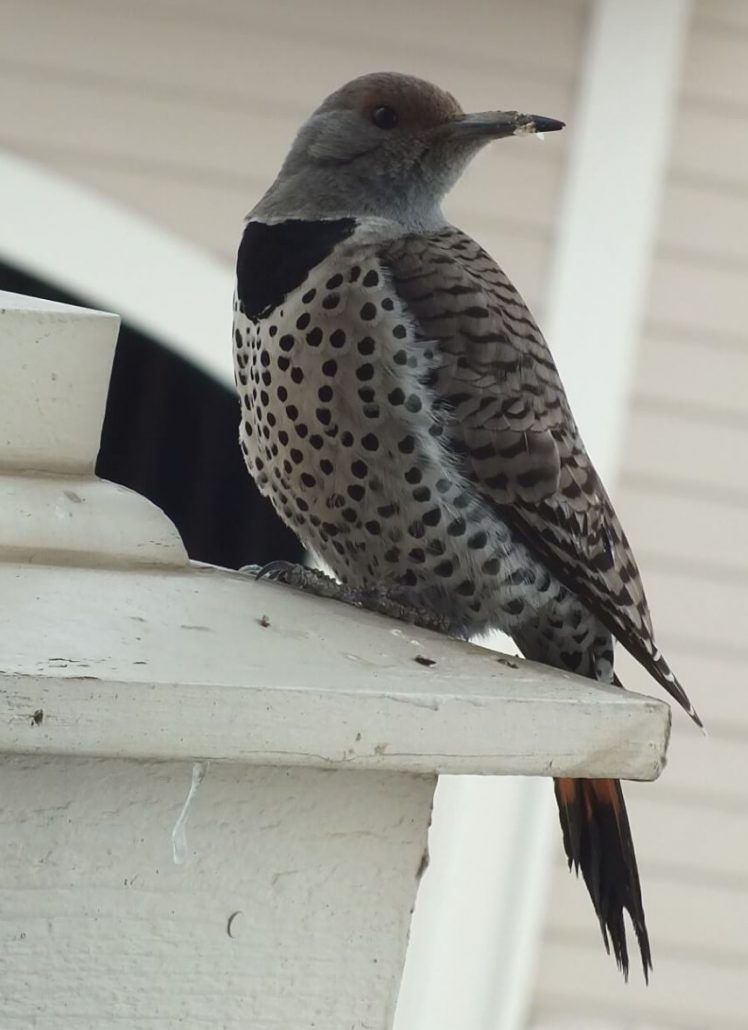
Northern Flicker. Photo: Megan Miller
Use a hanging system or moveable pole that allows you to move the feeders closer to the house in the winter in order to easily fill the feeders rather than trudging through the snow. In the spring, move the feeders away from the house again to help to attract some of the more timid birds to your yard. Try to place the feeders near dense bushes in order to provide a safe hiding place to protect the birds from hawks and falcons. To discourage cats from preying on the birds at feeders, try placing chicken wire flat on the ground under the feeder or around the tree. For a more natural deterrent, use pine cones. Cats don’t like to walk on the sharp bracts on the cones.
Remember to keep your feeders filled evenings and mornings so the birds have full stomachs to last them through the long winter nights and so they have something to eat when they are ready to start their day. Winter bird feeding is not only enjoyable but rewarding. We are rewarded with the sights and sounds of the birds and the feeling of being able to help our winged friends.

Scott Menough and his wife Sandy are owners of the Wild Birds Unlimited Nature Shop at 2720 S. Wadsworth Blvd. in Denver. Their store specializes in bird feeders, birdbaths, houses, binoculars, books, nature-related gifts, and custom Colorado bird seed blends. Your questions can be answered at (303) 987-1065.
Other Wild Birds Unlimited Nature Shops that support Bird Conservatory of the Rockies:
Wild Birds Unlimited in Arvada, CO
7370 W. 88th Ave.
(303) 467-2644
Wild Birds Unlimited Nature Shop in Fort Collins, CO
3636 S. College Ave.
(970) 225-2557
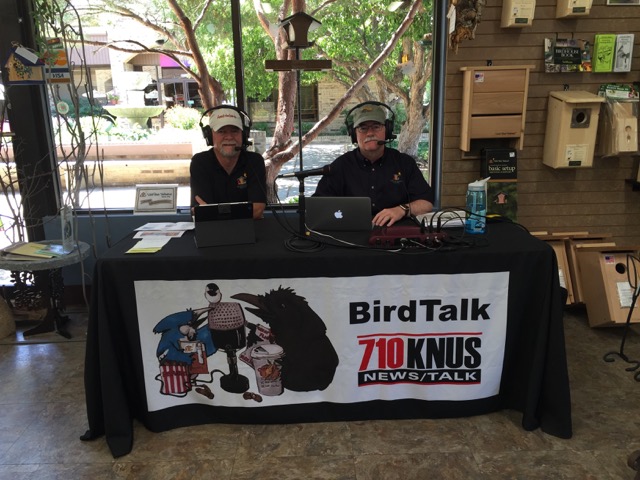
Listen to Scott and his brother David each week on the “BirdTalk” radio show every Saturday, noon to 1:00 Mountain Time on AM 710 KNUS. You’ll hear fascinating interviews, interesting nature topics, and have your questions answered. Call with your questions on wild birds or tell your critter stories during the show at (303) 696-1971. Podcasts of past programs are available on iTunes at “BirdTalk Radio”.


